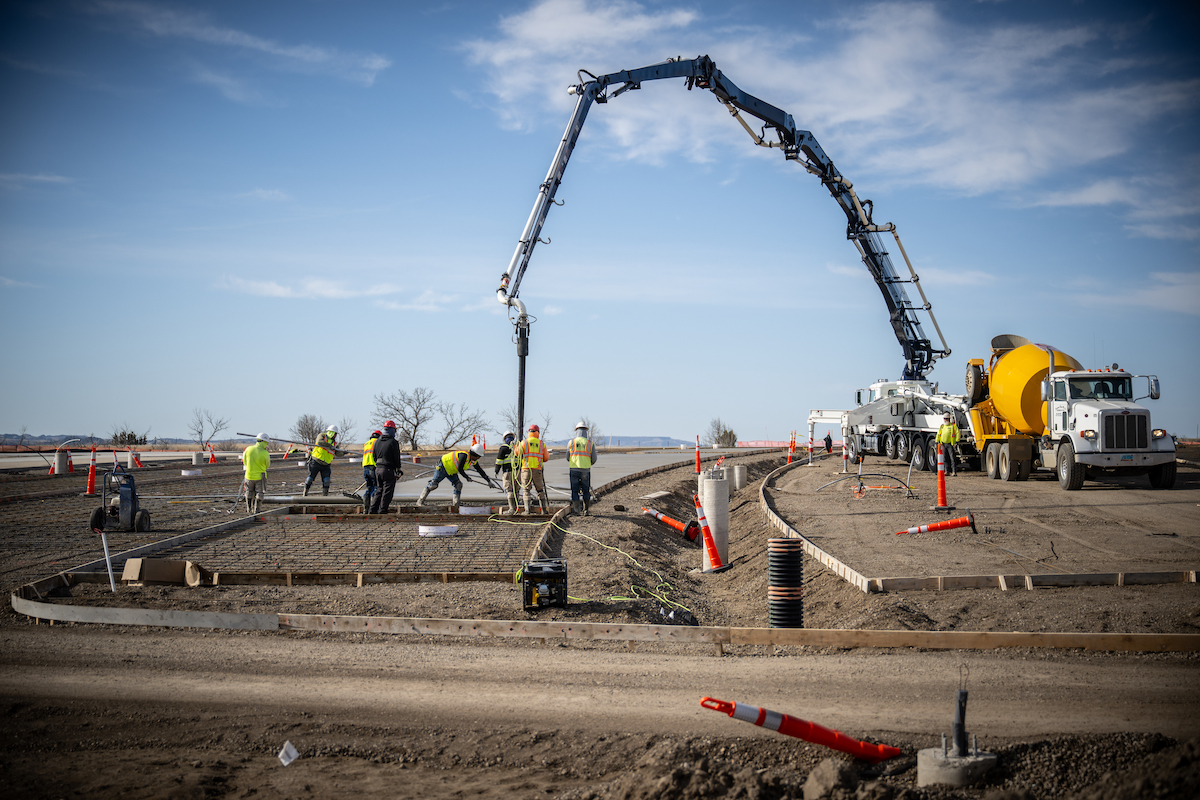In a time when the built environment is responsible for 40 percent of global greenhouse gas emissions, there is an urgency to improve sustainable construction practices worldwide.
Skanska, one the world’s leading construction and development firms, stands at the frontlines for constructing a more sustainable future, committed to achieving net-zero carbon emissions across its entire value chain by 2045 and targeting a 70 percent reduction in controlled emissions globally by 2030.
Over the past few months, Skanska’s team based in Los Angeles, California, initiated two separate pilot programs that tested two pieces of all-electric heavy machinery on the Los Angeles Metro Purple (D Line) Extension Transit project in the heart of the city. Our goal was to understand the capability of battery-powered equipment compared to their diesel counterparts and assess the environmental impact and community benefits.
Our team first tested the Volvo EC230 Electric Excavator and then the HAMM HD 12e VV Electric Compaction Roller. For both test cases, Skanska was among the first to use the preproduction models.
It was important for us to understand that our participation was part of the early stages of testing the capacity of electrification on active job sites, and we had to be honest with ourselves about the uncertainty of success. Our collaboration with Volvo, the Wirtgen Group, and Sunbelt Rentals provided the tools and support structure that allowed us to troubleshoot throughout the duration of our usage.

| Your local Komatsu America Corp dealer |
|---|
| Road Machinery and Supplies Company |
What we found gave us the hope we were seeking to create a pathway to the successful electrification of construction equipment on job sites across America. This is just the first, but very important, step. We found that the battery-powered equipment performed just as well, if not better, than their respective diesel counterparts, the operators preferred using them because of the reduced vibration during long shifts, and they produced significantly less noise for the job sites and the surrounding communities.
Over the 90-day trial of the Volvo EC230 Electric, our project team worked closely with Volvo and Sunbelt Rentals to capture data that allowed us to understand the direct impact of our use of the electric excavator on the project and its surrounding environment. The results showed reduced emissions and lowered costs. The unit reduced carbon per hour by 66 percent (34 kilograms) and saved an estimated 74 percent in cost per hour ($15.15).
We were also able to address challenges immediately, and onsite. The main challenge was the education around operating the charging mechanisms, which we were able to address quickly and easily without further issue.
We have also been testing the preproduction model of the HAMM HD 12e VV Electric Compaction Roller. This piece of equipment has been used on our road work up and down the iconic — and heavily trafficked — Wilshire Boulevard. Like the excavator, the use of the electric roller has been positive. Toward the end of the testing period, our teams opted to continue to use the electric roller.

| Your local Volvo Construction Equipment dealer |
|---|
| Nuss Truck & Equipment |
Both the Volvo EC230 Electric and HAMM HD 12e VV are significantly quieter than their diesel counterparts, and with zero emissions on the job site, those living near the project also get the benefits of using electric machinery. This benefit is of particular importance when we work in heavily populated areas in and around Los Angeles and other urban areas across the U.S.
The added benefits for our project team using the equipment were profound. It was important for Skanska to involve the operators from the beginning of the pilot to ensure their feedback was incorporated into the overall results. We found that operating the electric excavator and roller was smoother, quieter, and, at times, more powerful than the diesel equipment typically used on the project.
Operators felt physically better after long shifts, which connects to Skanska’s dedication to the health and safety of our workers. Many workers even talked about the sense of pride they felt being a part of Skanska’s willingness to be at the forefront of the electrification of heavy machinery.
There is a growing awareness that the construction industry has a large impact on global carbon emissions, as we are looking at electrification as a leading piece of the puzzle to address our climate needs.

| Your local Trimble Construction Division dealer |
|---|
| SITECH Northwest |
| SITECH Dakotas c/o Butler Machinery |
Our participation in piloted usage of the Volvo EC230 Electric and the Wirtgen Group’s HAMM HD 12e VV is a good first step in showing the construction industry that electrification is possible and is becoming an increasingly feasible option on job sites. We tested this equipment in a unique location with direct access to electricity, a secure place to store the equipment, and other ideal conditions that we understand do not translate to all types of construction projects. However, I still believe there is a large amount of value in what we learned during the process.
Skanska has created carbon reduction targets that are in line with our purpose as a corporation and consistent with the trajectory of customer demands and regulatory trends. For civil work on the West Coast, pilot programs like these allow us to push our climate action plan forward by starting to selectively transition large portions of our vehicle fleet to electric, hybrid, and other alternatives and continuously upgrade our earthmoving fleet to the best available technology. This will drive a more sustainable future for the construction industry.
James Bailey is the Executive Vice President for the West Coast region of Skanska USA Civil. Bailey joined Skanska in 2009 and has successfully led teams in delivering outperforming projects, including California’s Interstate 15 Express Lanes in Riverside, State Route 60 in the Badlands, and Mid-Coast Corridor in San Diego.






































































